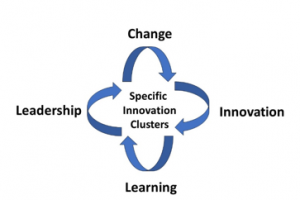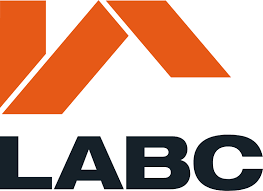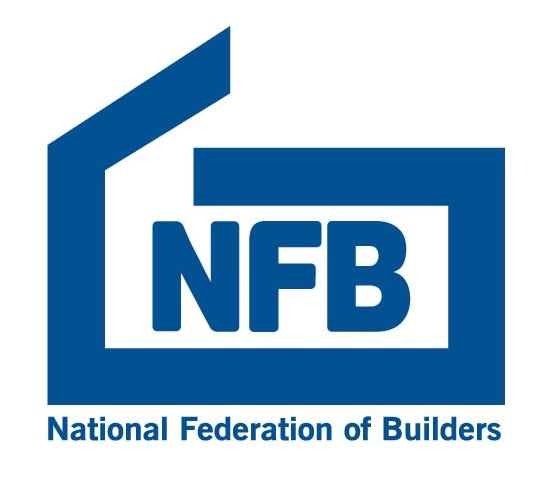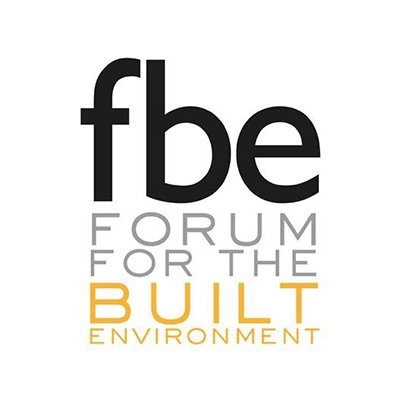![]()
Commissioned by CEI-Bois, architects dRMM have designed a reusable timber pavilion for COP26 for the UN climate change talks to be held in Glasgow, Scotland, UK in November 2021.
Timber Beacon’ is dRMM’s response to the collective brief of a unique global timber industry collaboration. The 25+ strong alliance of innovators in engineered mass timber and wood-based products, global forest growth and development, are led CEI-Bois, the European Confederation of Woodworking Industries and the UK Timber Trade Federation.
As world leaders discuss our global responsibilities and collective response to climate change during COP26, our message for the future will be powerfully three dimensional: in wood there is hope,” said dRMM founding director, Prof Alex de Rijke.
Sponsorship is being sought to realise the full potential of this project. To find out more, contact paul.brannen@cei-bois.org. This initiative is supported by UK Aid, under the UK Foreign, Commonwealth & Development Office’s FGMC programme (Forest Governance, Markets and Climate) and CESW.
The ‘Timber Beacon’ has been shortlisted by the British Government to be located at the COP26 Glasgow site for the duration of the talks.
Paul Brannen, director of public affairs at CEI-Bois, said “The global timber and global forest sectors see COP26 as the unmissable opportunity for policy makers to put into action what we already know about nature-based solutions; global forests and wood products are essential to averting catastrophic climate change, and increasing the use of timber products is an easy way to help decarbonise construction, renovation, and the wider built environment. Wood both stores carbon and substitutes for carbon intensive alternatives. We are also focused on globally recognised good governance as the key to growing forests around the world.”
CLICK HERE to view Timber Beacon Digital overview pdf

The introduction of the Building Safety Bill will bring much-needed improvements to safety compliance and building quality in the residential property sector, according to members of collaborative organisation Constructing Excellence Midlands.
The Building Safety Bill, which was introduced on 5 July 2021, features a new Building Safety Regulator at the core of the reforms, with a focus on safety accountability, increased pathways and compensation opportunities for residents raising concerns and a cultural change to crackdown on poor quality and unlawful building practices.
Andrew Carpenter, chief executive of Constructing Excellence Midlands, said: “The introduction of the Building Safety Bill is a landmark moment for the constructing industry and is promising to see such change now being made. It is a pivotal step towards tackling the UK’s housing crisis – giving more power to the leaseholders.”
Chris Stevens, managing director for the Midlands and performance excellence at Kier, said: “The Building Safety Bill is another positive step forward to improve safety across the built environment and, taken together with other initiatives such as the Building Safer Futures Charter, will help drive up standards and deliver long-term step change within the construction sector.”
The new measures in the Building Safety Bill aim to clearly identify where the responsibility lies for safety compliance, with liability and enforcement available to be enacted by the building safety regulator if required – increasing leaseholder rights to compensation.
The bill also intends to strengthen the regulatory framework for building products to enhance the requirements of the quality control process.
Julie Bell-Barker, head of construction projects and works at City of Wolverhampton Council, said: “I welcome this bill; It has got real teeth and holds clients, designers and contractors accountable for the decisions they make around quality and compliance. I hope the impacts of the reforms will be immediately recognisable and a driving force for cultural change in the construction industry – creating longer-lasting, higher quality and safer homes in the Midlands for years to come.”
Professor Rudi Klein, barrister and director at Klein Legal, said: “Hopefully this bill will help drive genuine collaboration in the industry and reduce the incidence of poor practices – such as payment abuse and lowest price culture – which compromise building quality and has plagued the construction industry for far too long.”

With Government signs pointing towards ‘Freedom Day’ on 19th July 2021 we are all looking forward to being able to welcome members and supporters to face-to-face events and activities again very soon.
The first such events will be our East and West Midlands Awards Dinners in Leicester on 2nd September and Birmingham on 10th September. I am sure we are looking forward to these prestigious events more than ever this year as we celebrate ‘best practice’ across the Midlands and at the same time provide excellent networking opportunities with like-minded forward-thinking industry professionals.
We are indebted to all our sponsors, and in particular our headline sponsor Salus Approved Inspectors, for their loyalty and generosity through what has been a very difficult two years for us all. Full details of how to book your tickets may be found elsewhere within this newsletter.
Going forward many of our activities will remain online, for example our weekly webinars and Theme Group meetings, as we have seen an increase in attendance during lockdown but of course we cannot wait to hold more Leadership Dinners, Summits and Workshops when we can enjoy that all important interaction with industry colleagues. It is going to be a hybrid offer going forward.
One of the most exciting and valuable aspects of what we have been doing during lockdown has been the creation of the Diploma in collaboration in construction. This launches in September 2021 and is the answer to a comment made by one construction client during one of our regular webinars. When asked what will prevent the construction industry delivering the Roadmap to Recovery, she answered ‘because they know the word collaboration but not how to do it’. CE Midlands took this comment and worked on a previous idea ten years ago to create a diploma which includes all the latest up-to-date industry initiatives like the Construction Playbook, Value Toolkit, Net Zero agenda, Building Safety Bill etc. Delegates will leave the course with the knowledge and behaviours required to deliver ‘collaborative working’ and furthermore will have a Level 5 diploma to prove it! For full details please visit: CEMDiploma
Two exciting re-launches have taken place in the past few months those being G4C, under the leadership of new joint chairs Nikita Badesha, Peter Richardson & Benjamin Hole (G4C – Constructing Excellence Midlands) and the Birmingham & Black Country Club under the leadership of David Hardman, Peter Lakin and Rachael Hobbis (Birmingham and Black Country – Constructing Excellence Midlands).
We encourage members with staff of 35 and under to join the former and those who carry out their business in Birmingham and the Black Country to do the latter. The next post pandemic re-launch will take place in Coventry & Warwickshire in October so please watch this space. If you are Coventry or Warwickshire based and would like to be part of this re-launch, please inform lynn.broughton@cemidlands.org.

By Amanda Long, Chief Executive of the Building a Safer Future Charter
In the built environment sector, the Grenfell Tower Disaster has put building safety at the top of everyone’s agenda. From a moral, social and economic perspective it’s now imperative that we embed enduring values, attitudes and ethical behaviours at the heart of all we do.
Dame Judith Hackitt’s independent inquiry into building regulations and fire safety clearly identified failure of leadership and culture as key underlying causes of the Grenfell Tower disaster. The ‘Building a Safer Future Charter’ was initiated in response by a group of early adopters including contractors, housing associations and local authorities supported by Ministry of Housing, Communities & Local Government with a vision of having an industry committed to putting people’s safety first.
Responding to the challenge: a charter for putting building safety first The Building a Safer Future (BSF) Charter has been created to promote an urgent and positive culture and behaviour change in the safety of the built environment. There is an urgent need to put people’s safety first in how we plan for, design, build, maintain, and look after the safety of the buildings we live, work or play in and protect those that use them. The Building a Safer Future Charter consists of five commitments that demonstrate commitment to protecting life by putting safety first, ahead of all other building priorities.
It was initiated by the Early Adopters Group as a first step towards spearheading the cultural and behavioural changes required across the industry to achieve a safer building system and has already gained over 220 registered signatories from across the built environment.
Robust benchmarking and independent verification
The BSF Charter has recently launched its ‘Charter Champion’ company initiative to help companies drive the systemic culture change required to put building safety first.
Through robust self-assessment, benchmarking and independent verification, the BSF Charter Champion company initiative will help companies identify potential issues and, in turn, develop continuous improvement plans to advance their overall approach and performance on leadership and culture in relation to building safety. Through their participation in this process companies will be able to identify ways in which they can help to reduce their risk profile in terms of building safety.
The launch of the Building a Safer Future Charter’s ‘Charter Champion’ status is an important step in driving forwards the systemic culture change in relation to major hazard safety that is required across the built-environment sector and through the entire value chain. As we progress on this critical journey we should be seeking to raise standards and build public trust across the industry.
Endorsed as a key driver for change
The BSF Charter has been highlighted by Dame Judith Hackitt and the Industry Safety Steering Group (ISSG) as a key mechanism for leading the culture change required for industry in their report for the Secretary of State and the Minister for Building Safety published in August 2020.
The benchmarking and verification framework has been supported and acknowledged as an important step towards the vital culture and leadership change needed to put building safety first by senior leaders across our industry including the Minister for Building Safety – Lord Greenhalgh, Chief
Inspector of Buildings at HSE – Peter Baker, Dame Judith Hackitt, and Co-Chair of CLC – Andy Mitchell.
Opportunity to demonstrate leadership
The first 13 companies, who are demonstrating real sectoral leadership, have signed up to begin the journey and engage in the robust benchmarking and independent assessment process.
The BSF Charter benchmarking and verification process is now open for participation from across the construction industry. All UK organisations involved in the built environment can proactively participate and demonstrate their commitment to building safety by becoming Registered Signatories to the Charter and, if appropriate, progress to undertaking the ‘Charter Champion’ benchmarking process. This is particularly the case for Duty Holders.
For more information about the Building a Safer Future Charter and how to get involved, visit https://buildingasaferfuture.org.uk/charter-champions-benchmarking-about/. Twitter: @BSFCharter LinkedIn: Building a Safer Future Charter

This month, Martyn Jones reflects on what can we carry forward from the way we went about innovating in the 1990s. Back then we were asked to “Rethink Construction” in response to the emerging techno-economic paradigm, with its wider availability of computer hardware and software, digital communications, optical fibres, data banks, information services and “chips” (microelectronics).
And it was not just about the technology but the new paradigm required a response to changes in the way firms should be organised and the adoption of new forms of inter-organisational behaviour, business models, cooperation and competition.
For obvious reasons, including very low margins, particularly at Tier 1, construction organisations aren’t big spenders on formal Research and Development (R&D) in comparison with firms in other industries.
Contrary to popular opinion, however, in construction projects we are constantly needing to innovate. For example, in overcoming the challenges and exploiting the often-unique opportunities presented by individual sites and clients. Also building taller, longer, quicker, better, greener etc.
But from time to time – as in the 1990s and now – we see new and more powerful drivers for change emerging that stimulate more intense periods of more radical innovation.
How did we approach the radical innovations called for in the Latham and Egan reports back in the 1990s? Well, the image used for this Thought for the Month will be familiar to those of us involved in the Bristol Rethinking Construction Club’s Specific Innovation Clusters (SICs), where it became something of a mantra.
The SICs were based on the premise that change requires innovation and innovation demands a synergistic combination of learning and leadership.
At that time the innovations we explored, evaluated and customised for construction included building closer, more collaborative inter-organisational relationships; integrating the processes of design and construction; building greater internal and external focus on the needs of customers; sharing learning; and advancing our transformational, situational and distributed styles of leadership.
The SICs were the forerunners of CESW’s Here to Learn Workshops and Thought Leadership Theme Groups.
At that time, we were greatly influenced in our approach by Rothwell’s work on innovation. [Rothwell a British sociologist widely regarded as one of the pioneers in industrial innovation and his significant contributions to the understanding of innovation management.]
He helped identify the key features of the 5th generation innovation process with its emphasis on the System Integration and Networking (SIN) model. The SIN model extended the parallel development of the 4th generation of innovation with the integration of Information and Communication Technologies (ITC) to form a new innovation process.
At that time, the members of the SICs identified the key determinants of successful innovation in construction within the 5th generation innovation model:
· The identification of a clear need for change
· The provision of external support and encouragement to change
· The adoption of a more strategic approach in the management and leadership of innovation
· A systematic approach to developing, implementing, monitoring and sustaining innovation within and between organisations
· Building the commitment of leaders in organisations and projects to innovation and the acceptance of the risks involved
· Developing the responsiveness and readiness of organisations to internal changes and changes in the construction market and wider environment
· Increasingly making use of ICTs to achieve of good linkages within and between organisations, leading to more open, trusting collaborative and creative relationships
· Seeing innovation as a corporate-wide and project-wide opportunity rather than a threat
· The strategic positioning of key individuals and champions of change within organisations and at pivotal points in the design and construction process
· Having an effective and ongoing learning process for individuals and the sharing of learning
What aspects of this can we carry forward from this to help us respond to the new challenges and opportunities we face? Clearly, much of this approach will still be relevant but we also need to be mindful that we are entering a new Digital paradigm that includes greener technologies, AI, robots and drones, and the need for greater social value. We will need to yet again rethink our responses but without abandoning the progress we have already made. New technologies, organisational structures and forms of collaboration, particularly in our response to the challenges of climate change, are emerging but we mustn’t overlook the progress we made in our response to the previous techno-economic paradigm.
















